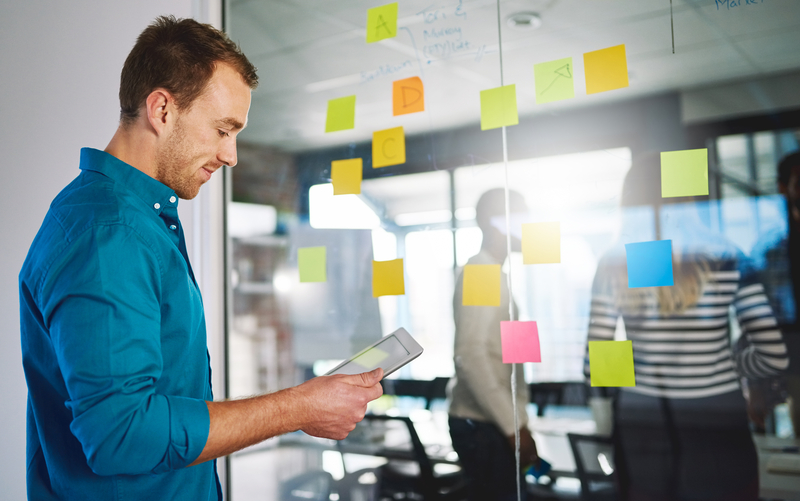
If it wasn’t for Servio we wouldn’t have been able to grow our Salesforce footprint due to the turnover in our admin role.”
— VP of Advancement, Higher Education Client
Empowered consumers — and yes, that includes learners and the parents, guardians, or influencers that help them make important life decisions — demand seamless online interactions responsive to their immediate needs and desires. So much so that Forrester labels the current economic climate the Age of the Customer.1 As a result, even organizations traditionally not considered technology dependent companies are discovering an urgent need for becoming tech centric operations. Doing so increases dependence on SaaS and other integrated digital platforms.
For most educational institutions information technology demands are changing so fast the IT department is forced into a reactive, task-driven, problem juggling operating model rather than functioning as proactive strategic asset of the organization. The end result is a seemingly never-ending struggle to keep pace with dynamic consumer behaviors and a growing organization. The problem is exacerbated when considering the shortage of tech talent, high turnover rates experienced within the IT team, and lack of expertise relative to rapidly evolving, highly specialized digital platforms.
According to Servio Consulting CEO Nancy Cooper, underappreciated but necessary mission critical tasks such as “system support and training and optimizing usage of highly specialized SaaS applications are not one-time events but important ongoing needs. Our managed services programs provide the system, technical, and staff support educational institutions require. In that way, the highly skilled IT experts organizations invest significant resources in remain focused on moving the organization forward rather than maintaining status quo.”
1 — Because of its Efficacy Managed Services are Growing at an Increasing Rate
High-value areas throughout your institution—both noncore and core, client-centric and back office — are rife with opportunities for elevated service capacity that produces quantifiable performance improvement. Unfortunately, years of research on digital transformation conducted by McKinsey show success rates for these initiatives are notoriously weak, meaning less than 30 percent succeed. A successful transformation is defined as one where your organization experiences not only quantifiable performance improvements but the means — through training and proper equipping of staff members — to sustain those improvements.
More recent results suggest that digital transformations are becoming increasingly difficult. According to McKinsey a mere “16 percent of respondents say their organizations’ digital transformations have successfully improved performance and also equipped them to sustain changes in the long term. An additional 7 percent say that performance improved but that those improvements were not sustained.”2
Ms. Cooper notes that lack of sustainable improvement is a major reason for the incredible growth in Managed Services and help desk administrative support. “Organizations are not looking for a quick fix. They want investments in digital transformation to produce both immediate and long-term performance improvements.”

As the graph above shows, Managed Services in the United States alone are expected to rise at a Compound Annual Growth Rate (CAGR) of nearly 13 percent over the next seven years.3 Digital transformation and the SaaS software making it possible are fueling the upsurge. For example, 47 percent of businesses anticipate an increase in spending on help desk and customer service software, mostly due to the adoption of CRM platforms.4
“The wave of investments in customer service software are motivated by the need for integrated, customizable, and proactive workflows that CRM platforms like Education Cloud offer. As a result, educational institutions of all kinds — K-12, vocational schools, community colleges, and universities of all sizes are focusing efforts on learner acquisition and retention through the entire education lifecycle. They are doing so not only by improving customer service, but also providing online self-service options and highly personalized online experiences,” Ms. Cooper adds. “Managed Services are an essential component in bringing those objectives to fruition.”
Companies invest in innovative technologies like Education Cloud to solve existing challenges, improve and streamline operations, minimize costs and optimize the value of technology investments. But when end users are hesitant in adopting the technology or making use of its full utility the result is a waste of precious resources and frustration among staff and stakeholders. Managed Services helps alleviate these issues by ensuring your organization extracts the maximum level of value from the Education Cloud platform.
2 — Elevate Your Capabilities by Augmenting Your Staff
Education Cloud optimizes your student acquisition and retention efforts by putting learner success and priorities at the center of your institution’s growth strategy. As a result your team gains access to better data management practices, customized marketing channels, seamless onboarding and learner advancement, integrated workflows, infrastructure and process improvement, and a single source of truth across the enterprise.
 A survey of some 1,500 business leaders revealed organizations incurred “significant financial exposure because of employee attrition caused by frustrations with technology; compensation for employees’ technology issues; increased costs to meet strategic goals; and an inability to realize the full value of application investments.”5
A survey of some 1,500 business leaders revealed organizations incurred “significant financial exposure because of employee attrition caused by frustrations with technology; compensation for employees’ technology issues; increased costs to meet strategic goals; and an inability to realize the full value of application investments.”5
That’s because digital initiatives run the risk of low adoption rates that can and will increase rather than decrease operating expense while becoming a drag on team morale. But the right plan executed properly avoids these potential pitfalls. Instead, you can help your teams reimagine workflows and drive process improvement by providing specialized training and ongoing support that comes from a single-minded focus and deep experience with the Salesforce Education Cloud platform.
“Servio Consulting Managed Services augment your engineering staff with specially trained support technicians that provide added consistency by focusing solely on Education Cloud. Organizations prove time and again — and the research bears this out — that IT professionals are far more productive and capable in supporting and evolving technology when assisted by a committed Admin-as-a-Service. In this way our clients accommodate system and/or staffing fluctuations by providing an added measure of stability and consistency,” Cooper says.
“Our team proactively monitors the system and recognizes and addresses potential issues before they become a problem. We would also run the optimizer, perform updates, publish monthly usage reports, operate the help desk, execute platform updates, and coordinate software release management as part of the Admin-as-a-Service relationship. As a result client institutions gain an abundance of functionality without the complexity or cost of enterprise solutions,” she adds.
3 — Focus on Strategy not Preservation
Attrition rates within organization IT departments are reaching a harrowing level of concern. According to Mindsight, “Despite the spate of recent tech layoffs that jettisoned tens of thousands of workers, there are still far more IT job openings than people to fill them. That’s largely because they’re in demand nearly everywhere, not just at tech companies like Google and Meta.”6
“The tech talent crunch is far from over,” said Mbula Schoen, Senior Director Analyst at Gartner. “Current demand for tech talent greatly outstrips supply, which Gartner expects will be the case until at least 2026, based on forecast IT spend. Contrary to what we’re seeing in the headlines, many of those being impacted by layoffs are in business functions, rather than tech roles. Additionally, there are increasingly opportunities for IT jobs outside traditional tech companies, so it’s important to look beyond just the tech provider community to truly grasp the state of the tech talent crunch.”6
An effective means of combatting attrition and defection within your IT ranks while enhancing cost-efficiency is delegating system management and support functions to a managed service provider. This relieves your IT staff of onerous, redundant, and time-consuming system maintenance tasks. Instead, their time is spent focusing on strategic initiatives that depend on the skill sets possessed by IT professionals. And engaged employees are happy and productive employees.
At the same time the organization benefits from greater performance predictability in terms of workload and expense planning, staffing consistency, and elevated performance and service levels.
Ms. Cooper observes, “There is something to be said for the intensified focus a team brings to the business when not burdened by the demands of maintaining the day-to-day operations modern IT departments require. This makes sustaining consistent service levels difficult,” she notes. “Our managed services and Admin-as-a-Service packages provide monthly Salesforce environment health checks in addition to full testing cycles upon the release of any new Salesforce functionality. Doing so relieves the institutions internal technology team of performing routine or seemingly mundane tasks while allowing them to focus on strategic initiatives.”
# # #
SOURCES:
1 https://www.forrester.com/blogs/category/age-of-the-customer/
3 https://www.grandviewresearch.com/industry-analysis/managed-services-market
4 https://www.superoffice.com/blog/crm-software-statistics/
5 Info-Tech Research Group
6 https://gomindsight.com/insights/blog/the-tech-talent-crunch-a-technology-report/
